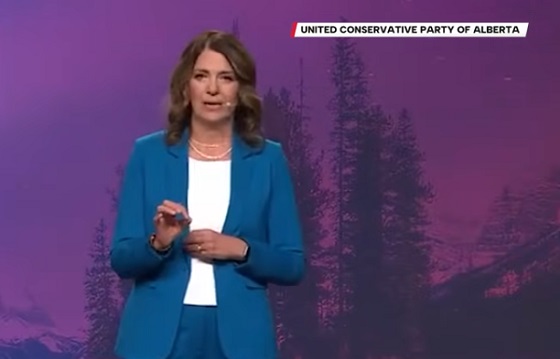Calgary
Why Not Me? – Introduction

Todayville Calgary is proud to provide our readers with exclusive, uplifting content.
Each week on Todayville Calgary will share with you a segment of the book “Why not Me? the keys to unlock your power, and release your potential.” by Mark Meincke.
There are 52 “keys” , and by the end of the series, the entire book will have been shared, for you to enjoy.
It is our mission at Todayville to do more than simply “report the news”. We wish to help our readers be uplifted as well.
Why Not Me?
The keys to unlock your power and release your potential
Introduction
The keys I’ve decided to share with you are not the only keys that are of value. There are many more; however, you will find those other keys as a natural result of using the ones I have provided in this book. I didn’t want to overload you with information, so I only shared these primary keys that will lead you to any of the further keys you may require or find useful.
In a way, this book is my autobiography. The lessons I am sharing are the same lessons I needed to learn to turn my own life around. I wasn’t born with a silver spoon in my mouth, nor did I have access to the understanding of my own abilities or resources. All I had was a burning feeling deep down that told me I was capable of far more than the evidence seemed to indicate. Resumes are used as evidence of your capabilities, and my resume wouldn’t have impressed anyone in my early years. Resumes can’t show what you are capable of or what your true purpose in life is. Somehow, I had a knowledge of myself that was beyond my resume, and it is this knowledge that gave me the strength to move forward and to grow.
Throughout grade school, I was always placed in the “special education” classes. I just didn’t fit in the school system, so they didn’t know what else to do with me. All of the tests they threw at me indicated that I was unusually bright, yet there I was with the “challenged” kids. In my early years, I was told that I was a “slow learner.” Once I accepted that misplaced label, I gave up at school. There didn’t seem to be a point in trying, so instead, I decided to scrape by with as little effort as possible. As a result of my decision to be a problem student, I failed both grade four and grade nine. I didn’t even graduate high school until I was twenty years old. This fact used to be way too embarrassing for me to admit. Today, instead of being embarrassed, I’m actually quite proud of myself for refusing to be a quitter and not dropping out of high school. It was very uncomfortable for me to be one of only two people out of 1,200 who were twenty years old in Grade Twelve. I just decided that being a twenty-year-old in high school wasn’t as embarrassing as being a drop out. That one simple decision was the fuel I needed to keep going.
To pull myself out of this hole of low self worth, I had to learn the lessons that are shared in this book. These tools, or keys, are fully transferable. Once acquired, you will be able to pass them onto those who ask you to share them. I hope that you are generous with this information, as it is needed badly by people from all walks of life. Just remember that you can only help people who are asking for help.
I am eternally thankful for the teachings of my friends and family. There are people in my life who were able to see my potential long before I could see it in myself, and there are people who still cannot see it to this day. I’m grateful to the people on both sides of this fence, as they all have contributed to my success, either directly or indirectly. Everyone has lessons to teach if you have learned how to listen.
I have a handful of friends who stood by me at a time when I felt unworthy of the company of good people. I’m not sure I would have stood by the person who I used to be, but they did. Somehow, they were able to look past my resume and see my potential. It’s a truly gifted person who has this ability, and I am incredibly blessed to have them in my inner circle.
Some of the keys I am sharing with you will assist you to see past other people’s resumes as well as your own. With this X-ray vision, you will be able to see through the negative shell that many have to the positive core that is trying to burst out of most of us.
This book has been arranged to provide a cumulative impact. Each key is intended to set the foundation to learn the next keys to follow. I have endeavored to make this book far more than just a text of valuable information; I wish for you to absorb the positive lessons in this book in a meaningful and useful way. My intention is not just to sell millions of copies of this book, but to create the largest positive impact I can.
Another key feature of this book is that it is designed to also be used as a quick reference guide. I’ve often tried to review a particular lesson from a book, but I couldn’t remember in which chapter it was buried. To alleviate this frustration, I’ve broken this book down into a unique format of individual keys. Each key contains information that has been placed in bold font. The parts in bold are often key phrases or quotes that are intended to encapsulate the essence of each key.
The extensive use of quotes in this book is intended to provide greater depth of understanding for each key. By providing quotes, I’m providing alternate ways to phrase a particular thought. By seeing a concept through many different sets of eyes, you are more likely to find a style that works for you and thus maximize the depth of your understanding of that concept.
I wish you well, and thank you for allowing me to join you for the next few steps of your journey toward releasing your potential.
For more stories, visit Todayville Calgary
Alberta
Calgary mayor should retain ‘blanket rezoning’ for sake of Calgarian families

From the Fraser Institute
By Tegan Hill and Austin Thompson
Calgary’s new mayor, Jeromy Farkas, has promised to scrap “blanket rezoning”—a policy enacted by the city in 2024 that allows homebuilders to construct duplexes, townhomes and fourplexes in most neighbourhoods without first seeking the blessing of city hall. In other words, amid an affordability crunch, Mayor Farkas plans to eliminate a policy that made homebuilding easier and cheaper—which risks reducing housing choices and increasing housing costs for Calgarian families.
Blanket rezoning was always contentious. Debate over the policy back in spring 2024 sparked the longest public hearing in Calgary’s history, with many Calgarians airing concerns about potential impacts on local infrastructure, parking availability and park space—all important issues.
Farkas argues that blanket rezoning amounts to “ignoring the community” and that Calgarians should not be forced to choose between a “City Hall that either stops building, or stops listening.” But in reality, it’s virtually impossible to promise more community input on housing decisions and build more homes faster.
If Farkas is serious about giving residents a “real say” in shaping their neighbourhood’s future, that means empowering them to alter—or even block—housing proposals that would otherwise be allowed under blanket rezoning. Greater public consultation tends to give an outsized voice to development opponents including individuals and groups that oppose higher density and social housing projects.
Alternatively, if the mayor and council reform the process to invite more public feedback, but still ultimately approve most higher-density projects (as was the case before blanket rezoning), the consultation process would be largely symbolic.
Either way, homebuilders would face longer costlier approval processes—and pass those costs on to Calgarian renters and homebuyers.
It’s not only the number of homes that matters, but also where they’re allowed to be built. Under blanket rezoning, builders can respond directly to the preferences of Calgarians. When buyers want duplexes in established neighbourhoods or renters want townhomes closer to work, homebuilders can respond without having to ask city hall for permission.
According to Mayor Farkas, higher-density housing should instead be concentrated near transit, schools and job centres, with the aim of “reducing pressure on established neighbourhoods.” At first glance, that may sound like a sensible compromise. But it rests on the flawed assumption that politicians and planners should decide where Calgarians are allowed to live, rather than letting Calgarians make those choices for themselves. With blanket rezoning, new homes are being built in areas in response to buyer and renter demand, rather than the dictates of city hall. The mayor also seems to suggest that city hall should thwart some redevelopment in established neighbourhoods, limiting housing options in places many Calgarians want to live.
The stakes are high. Calgary is not immune to Canada’s housing crisis, though it has so far weathered it better than most other major cities. That success partly reflects municipal policies—including blanket rezoning—that make homebuilding relatively quick and inexpensive.
A motion to repeal blanket rezoning is expected to be presented to Calgary’s municipal executive committee on Nov. 17. If it passes, which is likely, the policy will be put to a vote during a council meeting on Dec. 15. As the new mayor and council weigh changes to zoning rules, they should recognize the trade-offs. Empowering “the community” may sound appealing, but it may limit the housing choices available to families in those communities. Any reforms should preserve the best elements of blanket rezoning—its consistency, predictability and responsiveness to the housing preferences of Calgarians—and avoid erecting zoning barriers that have exacerbated the housing crisis in other cities.

Austin Thompson
Alberta
Gondek’s exit as mayor marks a turning point for Calgary

This article supplied by Troy Media.
The mayor’s controversial term is over, but a divided conservative base may struggle to take the city in a new direction
Calgary’s mayoral election went to a recount. Independent candidate Jeromy Farkas won with 91,112 votes (26.1 per cent). Communities First candidate Sonya Sharp was a very close second with 90,496 votes (26 per cent) and controversial incumbent mayor Jyoti Gondek finished third with 71,502 votes (20.5 per cent).
Gondek’s embarrassing tenure as mayor is finally over.
Gondek’s list of political and economic failures in just a single four-year term could easily fill a few book chapters—and most likely will at some point. She declared a climate emergency on her first day as Calgary’s mayor that virtually no one in the city asked for. She supported a four per cent tax increase during the COVID-19 pandemic, when many individuals and families were struggling to make ends meet. She snubbed the Dec. 2023 menorah lighting during Hanukkah because speakers were going to voice support for Israel a mere two months after the country was attacked by the bloodthirsty terrorist organization Hamas. The
Calgary Party even accused her last month of spending over $112,000 in taxpayers’ money for an “image makeover and brand redevelopment” that could have benefited her re-election campaign.
How did Gondek get elected mayor of Calgary with 176,344 votes in 2021, which is over 45 per cent of the electorate?
“Calgary may be a historically right-of-centre city,” I wrote in a recent National Post column, “but it’s experienced some unusual voting behaviour when it comes to mayoral elections. Its last three mayors, Dave Bronconnier, Naheed Nenshi and Gondek, have all been Liberal or left-leaning. There have also been an assortment of other Liberal mayors in recent decades like Al Duerr and, before he had a political epiphany, Ralph Klein.”
In fairness, many Canadians used to support the concept of balancing their votes in federal, provincial and municipal politics. I knew of some colleagues, friends and family members, including my father, who used to vote for the federal Liberals and Ontario PCs. There were a couple who supported the federal PCs and Ontario Liberals in several instances. In the case of one of my late
grandfathers, he gave a stray vote for Brian Mulroney’s federal PCs, the NDP and even its predecessor, the Co-operative Commonwealth Federation.
That’s not the case any longer. The more typical voting pattern in modern Canada is one of ideological consistency. Conservatives vote for Conservative candidates, Liberals vote for Liberal candidates, and so forth. There are some rare exceptions in municipal politics, such as the late Toronto mayor Rob Ford’s populistconservative agenda winning over a very Liberal city in 2010. It doesn’t happen very often these days, however.
I’ve always been a proponent of ideological consistency. It’s a more logical way of voting instead of throwing away one vote (so to speak) for some perceived model of political balance. There will always be people who straddle the political fence and vote for different parties and candidates during an election. That’s their right in a democratic society, but it often creates a type of ideological inconsistency that doesn’t benefit voters, parties or the political process in general.
Calgary goes against the grain in municipal politics. The city’s political dynamics are very different today due to migration, immigration and the like. Support for fiscal and social conservatism may still exist in Alberta, but the urban-rural split has become more profound and meaningful than the historic left-right divide. This makes the task of winning Calgary in elections more difficult for today’s provincial and federal Conservatives, as well as right-leaning mayoral candidates.
That’s what we witnessed during the Oct. 20 municipal election. Some Calgary Conservatives believed that Farkas was a more progressive-oriented conservative or centrist with a less fiscally conservative plan and outlook for the city. They viewed Sharp, the leader of a right-leaning municipal party founded last December, as a small “c” conservative and much closer to their ideology. Conversely, some Calgary Conservatives felt that Farkas, and not Sharp, would be a better Conservative option for mayor because he seemed less ideological in his outlook.
When you put it all together, Conservatives in what used to be one of the most right-leaning cities in a historically right-leaning province couldn’t decide who was the best political option available to replace the left-wing incumbent mayor. Time will tell if they chose wisely.
Fortunately, the razor-thin vote split didn’t save Gondek’s political hide. Maybe ideological consistency will finally win the day in Calgary municipal politics once the recount has ended and the city’s next mayor has been certified.
Michael Taube is a political commentator, Troy Media syndicated columnist and former speechwriter for Prime Minister Stephen Harper. He holds a master’s degree in comparative politics from the London School of Economics, lending academic rigour to his political insights.
Troy Media empowers Canadian community news outlets by providing independent, insightful analysis and commentary. Our mission is to support local media in helping Canadians stay informed and engaged by delivering reliable content that strengthens community connections and deepens understanding across the country
-

 International21 hours ago
International21 hours agoFBI may have finally nabbed the Jan. 6 pipe bomber
-

 Energy7 hours ago
Energy7 hours agoA look inside the ‘floatel’ housing B.C.’s LNG workforce
-

 Energy2 days ago
Energy2 days agoCanada following Europe’s stumble by ignoring energy reality
-

 COVID-1915 hours ago
COVID-1915 hours agoUniversity of Colorado will pay $10 million to staff, students for trying to force them to take COVID shots
-

 Business1 day ago
Business1 day agoCanada’s climate agenda hit business hard but barely cut emissions
-

 espionage21 hours ago
espionage21 hours agoDigital messages reportedly allege Chinese police targeted dissident who died suspiciously near Vancouver
-

 MAiD2 days ago
MAiD2 days agoFrom Exception to Routine. Why Canada’s State-Assisted Suicide Regime Demands a Human-Rights Review
-

 Business2 days ago
Business2 days agoCarney government should privatize airports—then open airline industry to competition






